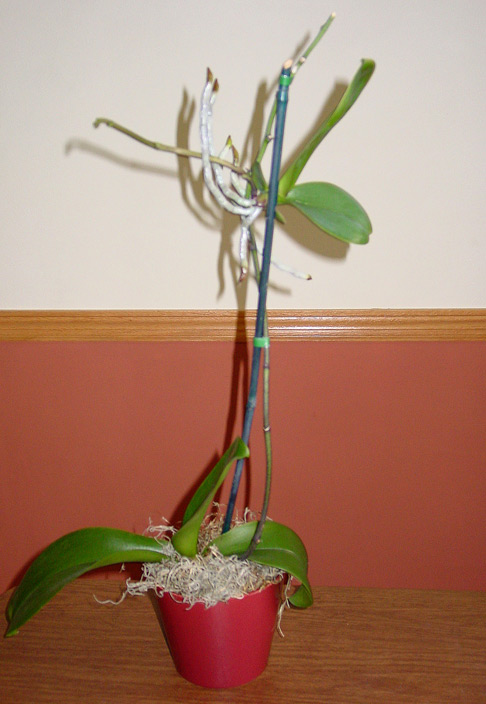I have been growing moth orchids or (Phalaenopsis) for a few years now with a bit of success and have been touting how carefree these beautiful plants seem to be. I have them in a bright window facing west with a little summer shade cast by a small Hawthorne tree outside the window. The orchids bloom at least once each year and their flowers last for a long time, often 2 months or more.
Yesterday my neighbor came across the street with an orchid that had been her Mother’s Day gift last year. She said the plant had never rebloomed and now something weird was happening to it. It seems that instead of new flowers, her orchid was instead growing a small plantlet on its old flower stem.
I looked up this phenomena and found out that plantlets or Keikis (Hawaiian for “baby”) are seen more frequently on Phalaenopsis, Epidendrum, and Dendrobium than on other orchids. Apparently if you do everything right and the mother is happy, she can produce a plantlet or Keiki on the old flower spike. This small plant is identical to the mother and will bear flowers that look like the mother’s. When the Keiki has grown roots at least 1-3 inches long, it can be cut from the spike and repotted. For best results, these small plants are often placed in the same pot as the mother. It seems that the mother helps to regulate the moisture in the pot which helps the baby to thrive. You can also just leave the baby on the spike and eventually both the mother and baby will bloom and this can be very pretty.
Basal Keiki
According to the research, another kind of plantlet can develop on the Phalaenopsis orchid. It grows from dormant nodes located under the bottom leaves of the orchid and this type of Keiki is best left on the plant. Occasionally an orchid will die from crown rot and the original plant will sprout a new shoot from one of these dormant nodes. This new plant is fed by the root system of the mother plant and often grows very quickly. Both types of Keiki are unusual in the home setting, but both can result in new orchid plants for your collection.




